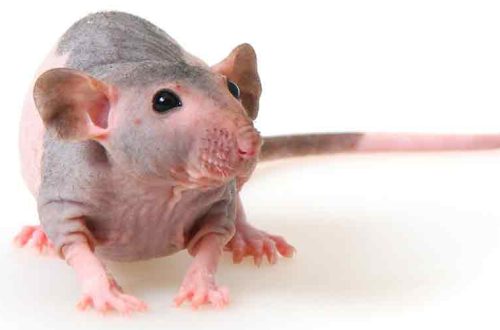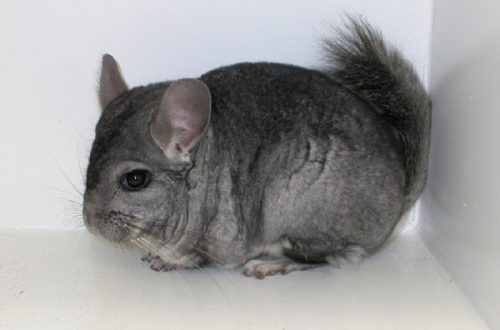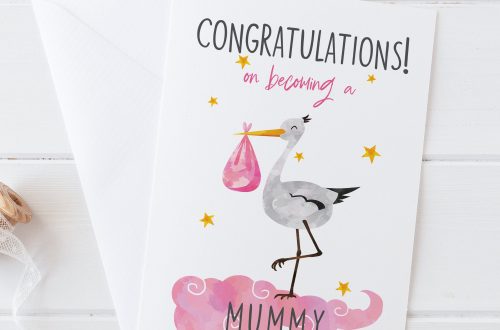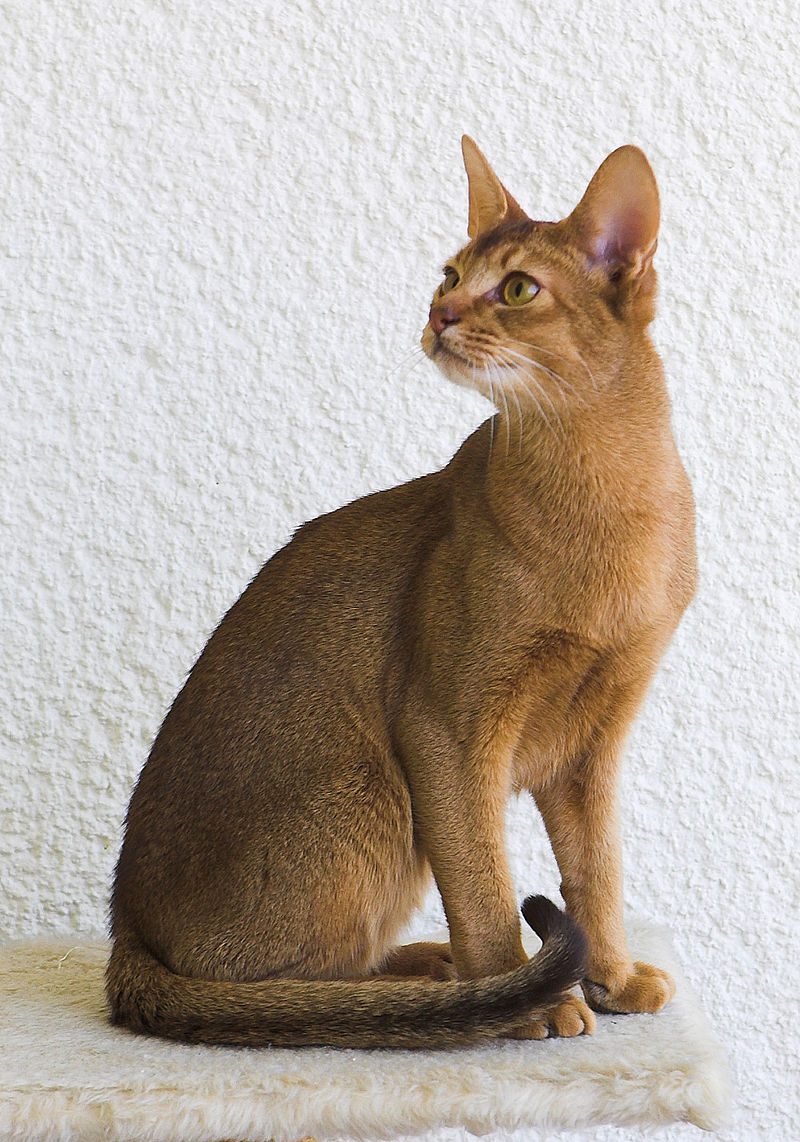
Pagpasanay sa Abyssinian
Selection of breeding animals
For breeding, it is recommended to choose animals of good lines. At the same time, it is recommended to pay special attention to the quality of males, because. males transmit their type to offspring better than females. Meanwhile, many breeders are mistaken when they think that animals with an ideal number of rosettes will definitely produce ideal offspring. In such litters, piglets with an excessive number of rosettes are observed. Therefore, it is recommended to choose for breeding animals with slight defects. The main condition: these shortcomings should not be at the same time in the male and in the female. You should also avoid breeding animals in which any defect is passed from generation to generation – it is extremely difficult to get rid of such shortcomings in the process of further breeding work.
The difficulty in choosing breeding animals lies in the fact that breeders are very reluctant to sell good piglets, in most cases they are left in their nursery.
For breeding, it is recommended to choose animals of good lines. At the same time, it is recommended to pay special attention to the quality of males, because. males transmit their type to offspring better than females. Meanwhile, many breeders are mistaken when they think that animals with an ideal number of rosettes will definitely produce ideal offspring. In such litters, piglets with an excessive number of rosettes are observed. Therefore, it is recommended to choose for breeding animals with slight defects. The main condition: these shortcomings should not be at the same time in the male and in the female. You should also avoid breeding animals in which any defect is passed from generation to generation – it is extremely difficult to get rid of such shortcomings in the process of further breeding work.
The difficulty in choosing breeding animals lies in the fact that breeders are very reluctant to sell good piglets, in most cases they are left in their nursery.
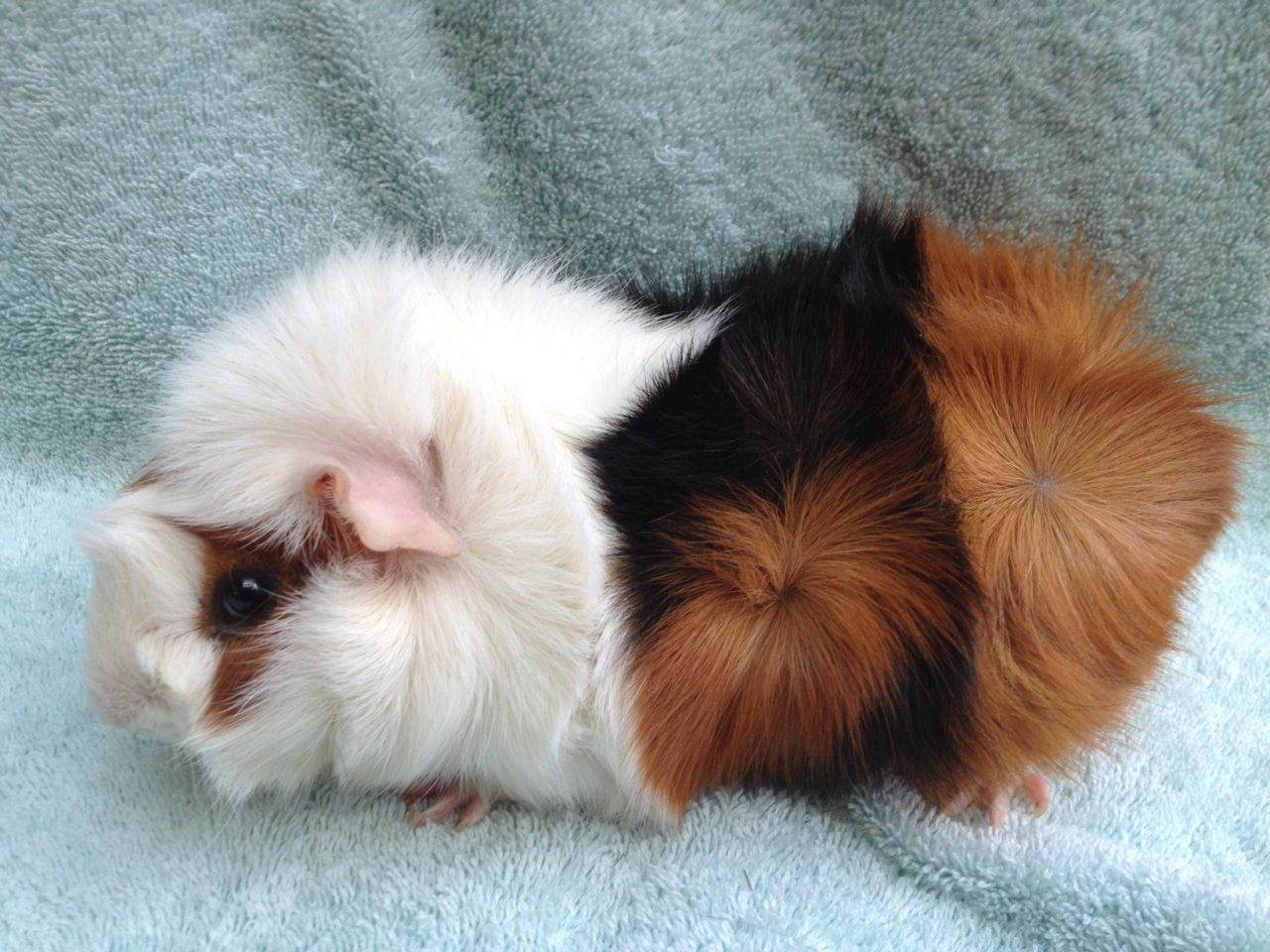
Breeding Abyssinian pigs
To breed these animals, along with knowledge of desirable and undesirable breed characteristics, knowledge of genetics is necessary. The sign of rosette formation is dominant in relation to the smooth coat. What does it mean: when a smooth-haired pig is crossed with a standard rosette, rosette piglets are obtained already in the first generation, but at the same time, from the point of view of breeders, the number and location of rosettes deviate from the standard. The second factor is responsible for the number and location of sockets, denoted in the literature by “m” – a modifier. This factor is recessive, which is transmitted homozygous and turns the rosette pig into a standard Abyssinian. (Wright 1935).
In thoroughbred Abyssinians, the number and location of sockets is of particular importance. 4 rosettes are preferred, located in a straight line above the body. Behind them, in the back of the body, there are 4 more sockets in a straight line (top view). In this case, it is necessary to pay attention to the fact that the centers of the sockets are small and the sockets are evenly spaced. With an absolutely uniform and symmetrical arrangement of rosettes, vertically directed ridges are formed between the rosettes. Of particular note is a crest in the middle of the body, extending from the head to the end of the body. In the back of the head, this comb forms strands that give the pig’s shoulders a massive look. This crest is crossed across by a shoulder crest and a crest formed by rosettes in the second part of the body. When viewed from above, the coat is divided into squares by combs. The harder the coat, the better it shows. Based on experience, males have a tougher coat than females. This phenomenon carries a hormonal basis and is also observed in castrated males – their coat is as soft as that of females.
Shoulder and nasal rosettes are also desirable. They are not prescribed by the standard, but increase the breeding value of the animal. While nasal rosettes are located near the nose, shoulder rosettes are located at elbow level.
Such a multitude of criteria leads to a multitude of big and small “mistakes” that an ideal purebred animal should not have. So, for example, the number of outlets is not always correct. Often there are also redundant outlets. With “double rosettes”, the distance between the centers of the rosettes should not exceed 0,5 cm. Excessive rosettes are located in other places of the wool, partially overlapped by neighboring rosettes or are located in the area of uXNUMXbuXNUMXbthe ridges and disrupt the harmony of the symmetrical pattern. The standard allows double sockets, but not superfluous. This standard increases the complexity of breeding. The lack of combs is also not allowed by the standard.
The next mistakes are the location of rosettes on the torso and rosettes on the hips not in the same line. In this case, the ridges are displaced and the symmetry is broken. Also, too open and large centers of rosettes are a disadvantage, which are evaluated at the exhibition according to their severity. It should also be noted that the coat is too soft and too short. The length of the coat should be approx. 3,5 cm. The length of the coat varies depending on the color. Thus, multi-coloured and white-coloured gilts often have longer coats than solid-coloured or agouti gilts.
An important criterion for the breed is the stiffness of the coat. Here, too, agouti and black gilts have softer coats compared to multi-colored gilts and gilts from the red series (red, golden, buff, cream, saffron, white).
Breeding problems also affect the correctness of the ears. While many years of breeding colors are often accompanied by good ears, new colors are accompanied by problems with the shape and position of the ears.
Another phenomenon observed in Abyssinians is a weak color intensity. Very rarely there are Abyssinians with a color comparable to the color of smooth-haired pigs. Breeders should strive to increase the intensity of the color, but at the same time they must be aware that the undercoat is visible because of the rosettes and the Abyssinians will always be lighter than the smooth ones. At shows, a lighter undercoat is taken for granted.
To breed these animals, along with knowledge of desirable and undesirable breed characteristics, knowledge of genetics is necessary. The sign of rosette formation is dominant in relation to the smooth coat. What does it mean: when a smooth-haired pig is crossed with a standard rosette, rosette piglets are obtained already in the first generation, but at the same time, from the point of view of breeders, the number and location of rosettes deviate from the standard. The second factor is responsible for the number and location of sockets, denoted in the literature by “m” – a modifier. This factor is recessive, which is transmitted homozygous and turns the rosette pig into a standard Abyssinian. (Wright 1935).
In thoroughbred Abyssinians, the number and location of sockets is of particular importance. 4 rosettes are preferred, located in a straight line above the body. Behind them, in the back of the body, there are 4 more sockets in a straight line (top view). In this case, it is necessary to pay attention to the fact that the centers of the sockets are small and the sockets are evenly spaced. With an absolutely uniform and symmetrical arrangement of rosettes, vertically directed ridges are formed between the rosettes. Of particular note is a crest in the middle of the body, extending from the head to the end of the body. In the back of the head, this comb forms strands that give the pig’s shoulders a massive look. This crest is crossed across by a shoulder crest and a crest formed by rosettes in the second part of the body. When viewed from above, the coat is divided into squares by combs. The harder the coat, the better it shows. Based on experience, males have a tougher coat than females. This phenomenon carries a hormonal basis and is also observed in castrated males – their coat is as soft as that of females.
Shoulder and nasal rosettes are also desirable. They are not prescribed by the standard, but increase the breeding value of the animal. While nasal rosettes are located near the nose, shoulder rosettes are located at elbow level.
Such a multitude of criteria leads to a multitude of big and small “mistakes” that an ideal purebred animal should not have. So, for example, the number of outlets is not always correct. Often there are also redundant outlets. With “double rosettes”, the distance between the centers of the rosettes should not exceed 0,5 cm. Excessive rosettes are located in other places of the wool, partially overlapped by neighboring rosettes or are located in the area of uXNUMXbuXNUMXbthe ridges and disrupt the harmony of the symmetrical pattern. The standard allows double sockets, but not superfluous. This standard increases the complexity of breeding. The lack of combs is also not allowed by the standard.
The next mistakes are the location of rosettes on the torso and rosettes on the hips not in the same line. In this case, the ridges are displaced and the symmetry is broken. Also, too open and large centers of rosettes are a disadvantage, which are evaluated at the exhibition according to their severity. It should also be noted that the coat is too soft and too short. The length of the coat should be approx. 3,5 cm. The length of the coat varies depending on the color. Thus, multi-coloured and white-coloured gilts often have longer coats than solid-coloured or agouti gilts.
An important criterion for the breed is the stiffness of the coat. Here, too, agouti and black gilts have softer coats compared to multi-colored gilts and gilts from the red series (red, golden, buff, cream, saffron, white).
Breeding problems also affect the correctness of the ears. While many years of breeding colors are often accompanied by good ears, new colors are accompanied by problems with the shape and position of the ears.
Another phenomenon observed in Abyssinians is a weak color intensity. Very rarely there are Abyssinians with a color comparable to the color of smooth-haired pigs. Breeders should strive to increase the intensity of the color, but at the same time they must be aware that the undercoat is visible because of the rosettes and the Abyssinians will always be lighter than the smooth ones. At shows, a lighter undercoat is taken for granted.
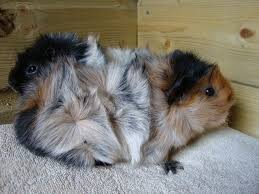
Preparation for exhibitions
Preparation for the exhibition of the Abyssinians is very simple. These are: clipping of claws, cleaning of ears, paws, cleaning of wool from strong pollution.
In order not to lose the required stiffness of the coat, it is not recommended to bathe the pigs before the exhibition.
Pagkahuman sa pulong
As you have already noticed, breeding Abyssinians is not an easy and interesting business. Therefore, it is very important that breeders share experience and information with each other.
In previous topics, we have already met with the wonderful pigs that are in our club. The first step towards successful breeding work has already been taken. Now it is very important that breeders post photos of males and females and their offspring. So we can think together and help each other in the selection of producers for a particular animal, we will understand together the genetics of colors and the inheritance of rosettes, and of course we will enjoy friendly communication.
© Larisa Schultz
Preparation for the exhibition of the Abyssinians is very simple. These are: clipping of claws, cleaning of ears, paws, cleaning of wool from strong pollution.
In order not to lose the required stiffness of the coat, it is not recommended to bathe the pigs before the exhibition.
Pagkahuman sa pulong
As you have already noticed, breeding Abyssinians is not an easy and interesting business. Therefore, it is very important that breeders share experience and information with each other.
In previous topics, we have already met with the wonderful pigs that are in our club. The first step towards successful breeding work has already been taken. Now it is very important that breeders post photos of males and females and their offspring. So we can think together and help each other in the selection of producers for a particular animal, we will understand together the genetics of colors and the inheritance of rosettes, and of course we will enjoy friendly communication.
© Larisa Schultz



